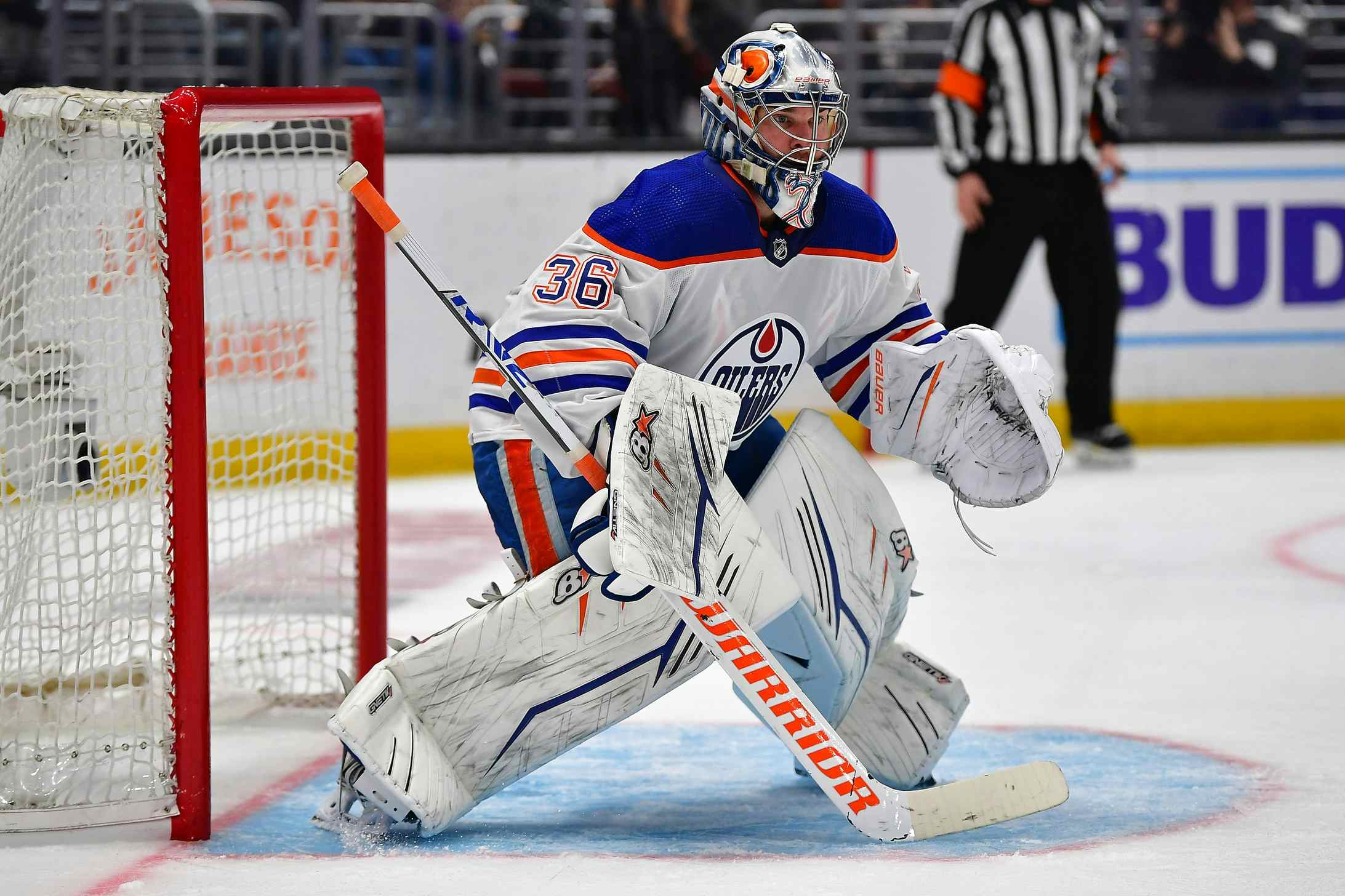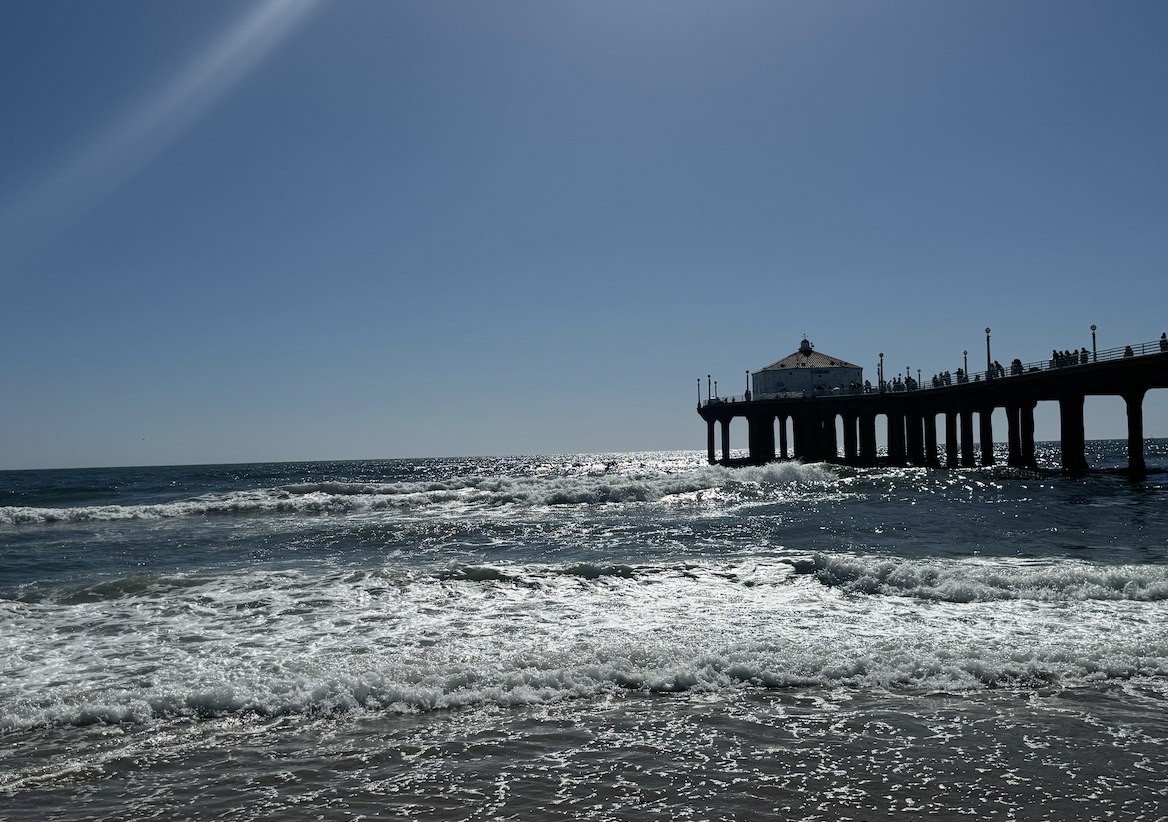Big Decisions: The Curtis Joseph trade that never happened
Everybody who was a fan of the Edmonton Oilers in the 1990’s remembers Curtis Joseph. Despite playing for the copper and blue for less than three seasons, Joseph had a lasting impression, helping the Oilers to two first round upsets as he backstopped the little team that could.
In March of 1998, the Oilers faced a difficult choice. Joseph was an impending unrestricted free agent, and they couldn’t afford to keep him. However, the Oilers were also on the playoff bubble: keeping or trading Joseph could mean the difference between playoffs and no playoffs. They opted to keep him – was it the right choice?
The Playoff Picture
Let’s pick things up on March 23rd, the day before the trade deadline. The top five teams in the Western Conference hadn’t all clinched playoff berths mathematically, but were in no legitimate danger of missing the playoffs (Los Angeles, in fifth, had a 14-point lead on ninth-place San Jose). Here were the teams in contention for a playoff spot:
- 6. Chicago: 70GP, 69 points, +4 goal diff.
- 7. Phoenix: 70GP, 66 points, -8 goal diff.
- 8. Edmonton: 71GP, 64 points, -20 goal diff.
- —
- 9. San Jose: 69GP, 61 points, -19 goal diff.
- 10. Toronto: 69GP, 57 points, -40 goal diff.
Toronto was just two points up on the worst team in the West, Vancouver, but they had the luxury of games in hand and could conceivably have made up the gap. Realistically, though, the primary battle looked to be between San Jose and Edmonton, with the Sharks three points back but with two games in hand.
(In the end, it was actually Chicago that fell out of the race, with both the Sharks and Oilers finishing in the post-season.)
Complications

It’s also worth remembering that March, 1998, was basically the closest the Oilers ever came to leaving Edmonton. Les Alexander had swept in, hoping to move the team to Houston, and Cal Nichols and the Edmonton Investors Group had until March 13 to put a deposit on the team. They met the deadline and appeared likely to seal the deal (as they eventually did) but at the trade deadline the Oilers were in a sort of ownership limbo – likely to be the property of EIG, but not certainly so.
Curtis Joseph was making $2.3 million/season and was expected to at least double that as a free agent over the summer (Toronto eventually signed him to a four-year deal worth more than $6 million/season). The Oilers simply couldn’t match that kind of money.
To Trade Or Not To Trade

There were teams interested in Joseph; oddly enough, the most interested club was probably the New York Islanders. The Islanders were 10 points out of the playoffs on March 23rd, but they really wanted a long-term upgrade between the pipes. G.M. Mike Milbury had taken over the coaching duties from Rick Bowness a few weeks prior and had (with his trademark tact, no doubt) made it clear to starter Tommy Salo that he expected him to prove his worth; Milbury and Salo had been at loggerheads since.
It’s hard to know exactly what was offered for Joseph, but the Islanders made a significant pitch for his services at the deadline. Here are some reports from the New York Daily News at the time:
The Edmonton Oilers, in their pursuit of defenseman Rich Pilon, are also talking with the Islanders about a bigger deal one that could bring goalie Curtis Joseph to Long Island… A deal for Joseph would have to include more than just Pilon. Milbury may be willing to part with Bryan Smolinski or former Oiler Mariusz Czerkawski to help get the deal done. Meanwhile, he has long been interested in Oilers forward Mike Grier. And then there’s current Isles goalie Tommy Salo, who gets what may be a bit of a showcase start when the Isles play the Oilers at Northlands tonight. If the eighth-place Oilers do trade Joseph, it’s hard to imagine they’d do it without getting a replacement goalie in return for their expected playoff run.
Milbury met with Oilers GM Glen Sather Saturday night to discuss a goaltender swap. They talked again yesterday, but as Milbury joked on the Isles’ pre-game show, "It’s tough to make a deal with that crook." He was kidding, but Sather’s initial asking price for Joseph was extreme. The News has learned he asked for three players, including Salo, for Joseph. It is believed one of those players is defenseman Rich Pilon, who could become an unrestricted free agent in July.
Although the deal never transpired, the interest in a Salo for Joseph trade seemed to run in both directions, with the question being the rest of the deal. Rich Pilon would undoubtedly have been included – the Islanders had new ownership but had already taken on additional salary in previous deals (including the acquisition of Trevor Linden), and Milbury was adamant that Pilon would be traded or signed. The Oilers made a hard pitch for Pilon’s services.
The rest of the deal is harder to figure. Likely, the Oilers could have arranged to get Salo, Pilon and Mariusz Czerkawski – the 25-year old had scored 26 goals with Edmonton one season earlier but was in the middle of a bad year with the Islanders; he put up just 12 goals in 25 games. Bryan Smolinski was also in a down year but had more value – the 27-year old could have hit 30 goals three times in the four years prior if not for a holdout and a shortened 1994-95 season.
Meanwhile, Mike Grier was in a sophomore slump; he’d scored 15 goals as a rookie but would only hit 15 points in his second NHL season.
We might imagine one of two deals being acceptable to the Islanders:
- Curtis Joseph for Tommy Salo, Rich Pilon and Mariusz Czerkawski or
- Curtis Joseph and Mike Grier for Tommy Salo, Bryan Smolinski and Rich Pilon.
Naturally, it’s far from clear those exact deals were discussed, but that’s likely the ballpark on return.
The Right Call?
It is fun to wonder about the Oilers chances had they had Smolinski as a legitimate second-line center behind Doug Weight (the Oilers never filled the role; they came closest with a rookie Mike Comrie in 2000-01, but they then dealt Weight due to financial concerns) or if Czerkawski had been a 30-goal man in Edmonton rather than on Long Island, but the team probably made the right decision in the long-term.
Rich Pilon was a tough, mean, third-pairing defenceman who would play 60 games in a season just once more over the course of his career. Tommy Salo had value, but the Oilers would get him for next to nothing the next season anyway – after picking up Felix Potvin from Toronto (Potvin had been displaced by Joseph), Milbury swapped him for Mats Lindgren and an 8th-round pick.
The other factor is this: because the Oilers hung on to Joseph, they were able to eke out their second first-round upset in two years, passing by the division champion Avalanche in seven games. Joseph was the difference in that series, posting a 0.930 save percentage. More importantly, with the Oilers down 3-1 he shut the door, stopping 92 of 93 shots he faced over the final three contests.
Beyond the fact that winning is sort of the primary goal of any professional hockey team, the retention of Joseph meant that the cash-strapped Oilers were able to collect revenue from five home playoff dates. Had they acquired Salo, who was okay down the stretch but not nearly as hot as Joseph (Joseph posted a 0.912 save percentage to Salo’s 0.903), that figure probably would only have been two (the Oilers almost certainly would have finished behind San Jose, and faced Dallas; they lost to Dallas in five games in the second round). That extra revenue alone would probably have made the decision to keep Joseph justifiable in the eyes of ownership.
In retrospect, it seems likely to me that Glen Sather and the Oilers made the right decision in keeping Joseph.
Previously in this series
Recent articles from Jonathan Willis





